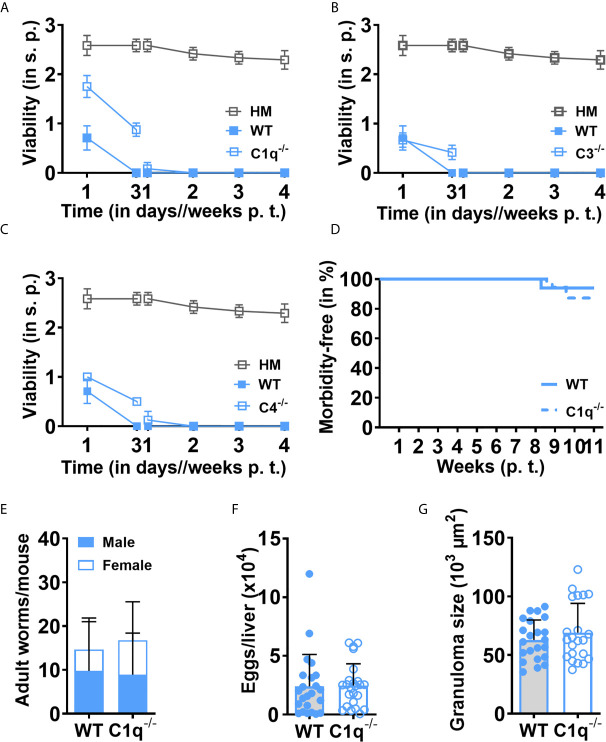Figure 5.
Loss of C1q alters neither rapid killing of NTS nor in vivo maturation and immunopathology after S. mansoni infection. NTS were cultured and maintained using sera collected from (A) C1q-/-, (B) C3-/-, (C) C4-/- or wild-type (WT) mice and viability scoring was performed at the indicated time points. Hybridoma medium (HM) alone was used as a control. Results are representative of at least three individual experiments. Each data point has been shown as mean ± SD of at least three technical replicates. (D) Loss of C1q does not significantly influence the mortality of S. mansoni-infected mice. C1q-deficient mice were infected by injecting 200 cercariae subcutaneously and survival of the animals was monitored on a weekly basis. (E) Worm maturation was not affected by the deficiency of C1q. After nine to 11 weeks of infection, the animals were euthanized and mature worms from mesenteric veins were flushed out, enumerated and male/female ratio was determined. (F) Lack of C1q does not affect the fecundity of the worm. Animals were infected and euthanized, and eggs from a weighted liver were isolated and counted. (G) C1q does not influence the egg-induced immunopathology of the worm. Liver sections (4 µm) from infected wild-type or C1q-/- mice were stained with Masson’s Blue and the diameter of 30-40 granuloma/section was measured under microscope (10x). Data shown is pooled data from five individual experiments (WT, n=28; C1q-/-, n=34). Each data point shows a single mouse. Mean ± SD is indicated with bars. p. t., post transformation; s.p., scoring point.

